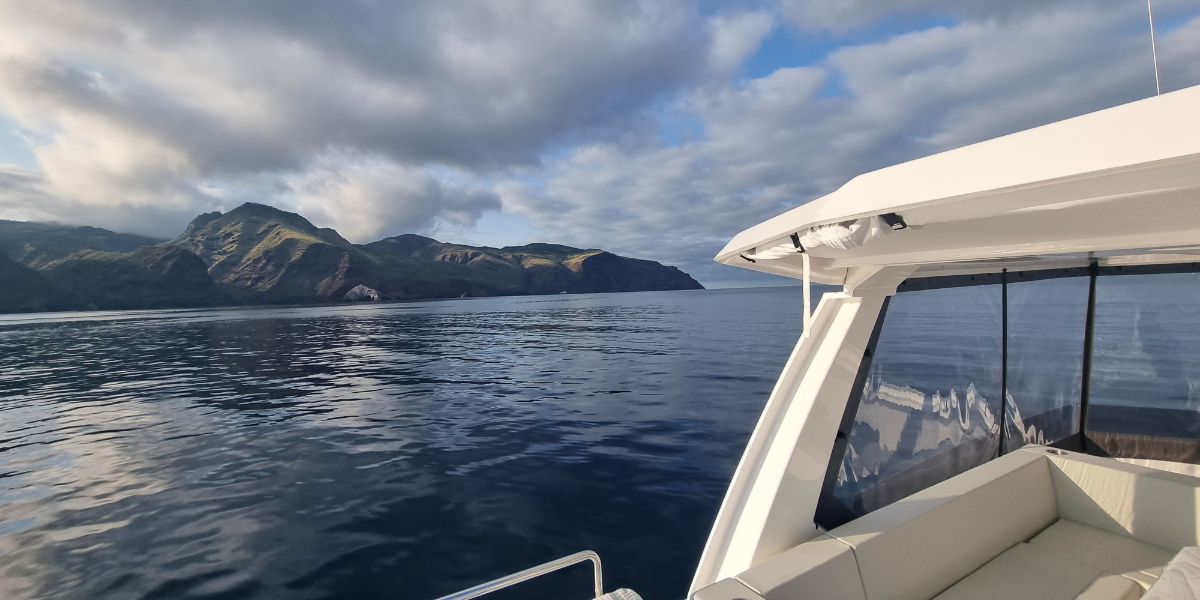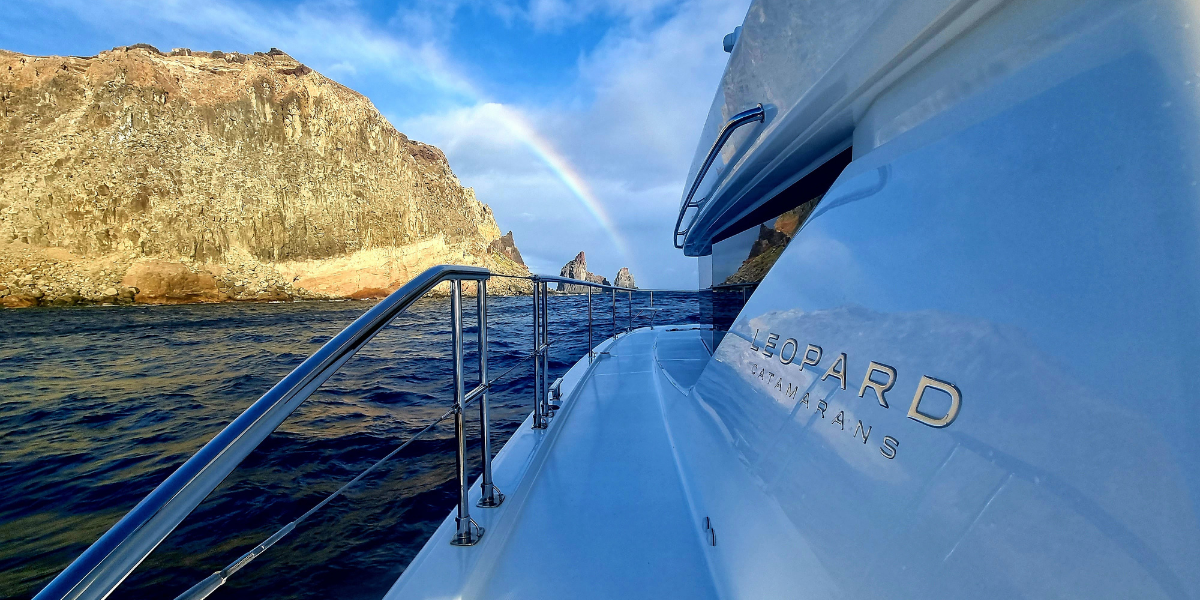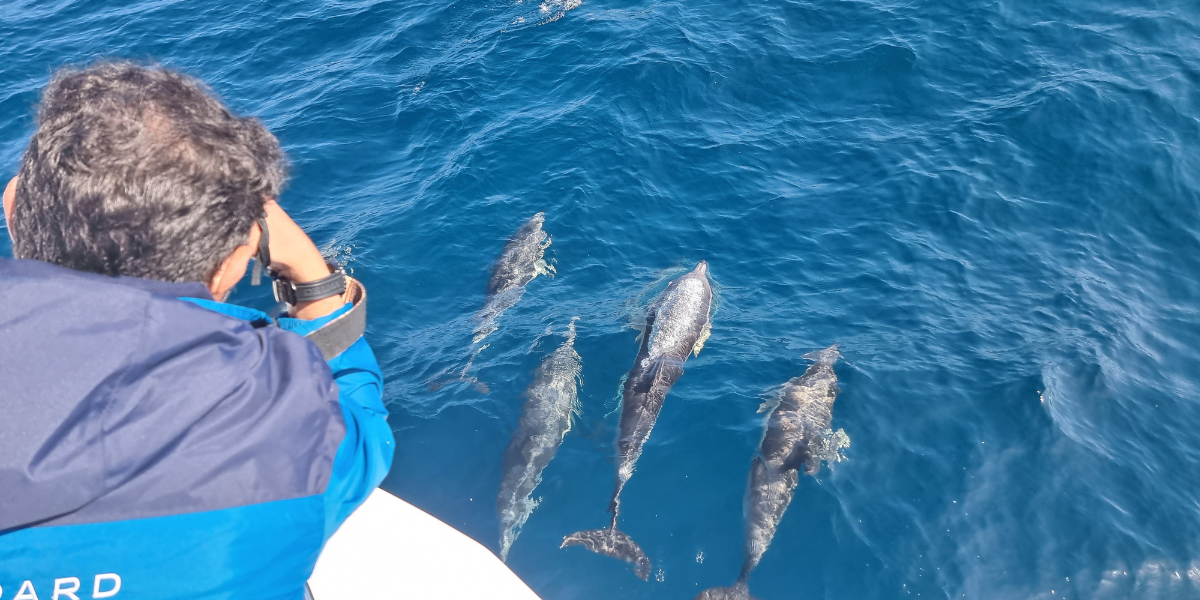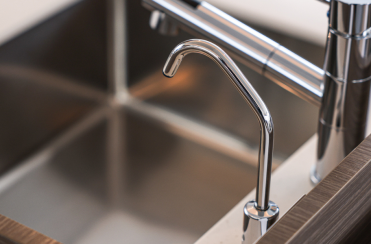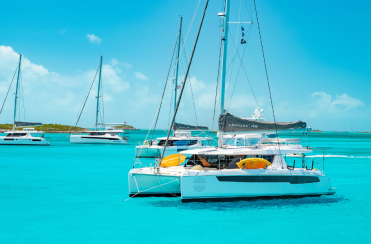There are thousands of stories out there about crossing oceans under sail. But transiting a long stretch of the ocean under power? That’s a different adventure.
Delivering a Leopard 46 Powercat
Leopard agent and delivery captain Guilherme Kodja had a challenge. A new Leopard 46 Powercat needed delivery from the Robertson & Caine yard in South Africa to a buyer in Brazil, and an ocean lay in the way. Captain Kodja started planning and, ten months later, set out for a month-long, 4,453 nautical mile (nm) trek across the South Atlantic with three crew.
Delivering a power yacht has similarities and differences from delivering a sailing vessel. Fuel is the priority. You need a lot, and there’s no guarantee you’ll get good quality fuel once you leave mainland ports.
Weather is a concern, but your criteria are a little different. “Sea state is more important than wind direction,” says Captain Kodja. “We can travel a more direct route because there’s no tacking.”
The Route and Plan
This won’t be a non-stop trip. At a cruising speed of 6.8 knots, the Leopard 46 used just over two gallons (eight liters) of fuel per hour. With a built-in diesel tankage of over 400 gallons (1,852 liters), the Leopard 46 Power Cat has a standard range of more than 1,500 nautical miles.
Like sailing yachts, wind and current influence a powered delivery, even if the priorities differ. “We headed north for better wind and current,” said Kodja. “It’s a longer distance, but faster and more comfortable.” And the need for more fuel somewhere along the way means he can’t easily take a more southern route.
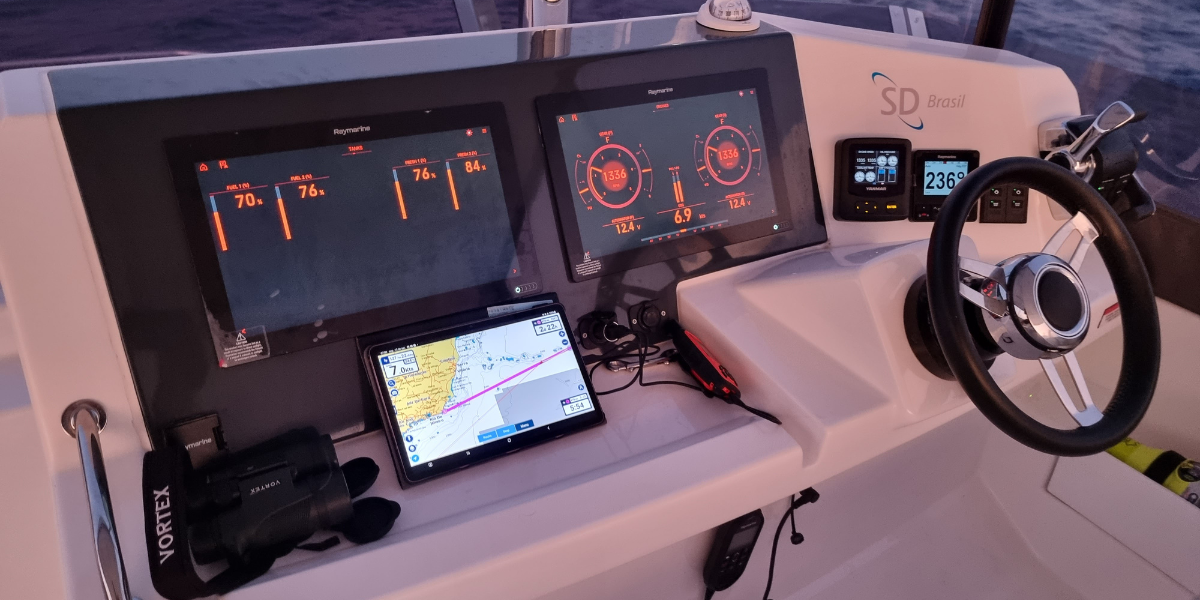
Leg One – Cape Town to Luderitz, Namibia
The first step was a coast-hugging trip up the African coast. This 502-nautical-mile trip took about three days. The goal was to top-up fuel and provisions while waiting for a good weather window. Captain Kodja noted that “a powering boat pitches more than a sailing, so choosing a good window is important.”
Leg Two – Luderitz to St. Helena
Though St. Helena lies north of Itajai, Brazil, their ultimate destination, it’s a popular stopping point for yachts crossing the Atlantic. It’s not just that the northerly route is more comfortable; there are few places to the south to stop. This 1,338nm leg took eight days of motoring and used 424 gallons (1,926 liters) of fuel. This was the last stop to refuel for the rest of the trip.
Leg Three – St. Helena to Martin Vaz Island and Trinidade
The Martin Vaz and Trinidade islands are the easternmost possessions of Brazil, and the crew made a brief stop there to perform the 500-hour service on the engines. This was another long leg at 8 1/2 days, covering 1,385 miles. It was a welcome return to Brazilian waters after a long time at sea.
Leg Four – Martin Vaz Island/Trinidade to Cabo Frio
Rio de Janeiro was not in the plan. The closest the crew ventured was nearby Cabo Frio. It’s there, after four and a half days and 725 nm of motoring from Martin Vaz Island, they had some exciting encounters with busy shipping traffic headed into Rio and a military exercise. They ducked into Cabo Frio to miss some weather and only stayed overnight.
Leg Five – Cabo Frio to Itajai
The final sprint to the yacht’s new home was along the coast of Brazil. This three-day coastal passage covered another 465 nm of water before completing the trip.
Fuel, Engines, and No Problems
Captain Kodja solved the fuel problems by carrying external tanks. It took twenty-eight five-and-a-half gallon (25L) jerry cans and five fifty-five gallon (250L) drums. These were latched to the deck and cockpit where they could fit.
“Refueling wasn’t a problem,” Kodja said. “We’d look at the weather and find a good window of calm. With an electric pump, it worked easily.”
“The engines ran like a Swiss clock,” he added. “Quiet and smooth, we usually couldn’t hear them from the forward cockpit.”
As far as other problems go, the maiden voyage of this Leopard 46 came off with no significant hitches – a testament to Leopard quality out of the factory. “We had a hose work loose; we had to tighten a few screws,” the captain said. “Nothing, really.”
Weather, Wildlife, and Warships
In a month at sea, they avoided dramatic weather. By watching the weather and picking good windows, they made out well. And along the way, they saw spectacular wildlife.
“We stayed south, below the humpback whale migration,” said Kodja. One thing they did not want to do was hit a whale. But they did see some of those fantastic creatures. Close to Brazil, they spotted dozens of whales at once. Other sightings included rare porpoises and countless sea birds.
Another surprise was sailing into a multinational naval exercise off the coast of Brazil. The crew expected lots of shipping traffic off Rio, but they were surprised to find a naval fleet off Cabo Frio. The captain spent the last twenty miles in VHF contact with U.S. warships talking about positions and maneuvering plans.
Smooth Start for a Happy Owner
The trip is documented in a series of videos, with some stunning sights and marine life. Captain Kodja and his crew made the delivery of a lifetime and put the boat through her paces. And the Leopard 46 showed off her build quality and capability, delivering a flawless performance on a demanding delivery.
“We brought the boat back for the Rio boat show,” Kodja said. “Even after the 210nm delivery to the show, it took almost nothing to get this boat looking perfect.”
